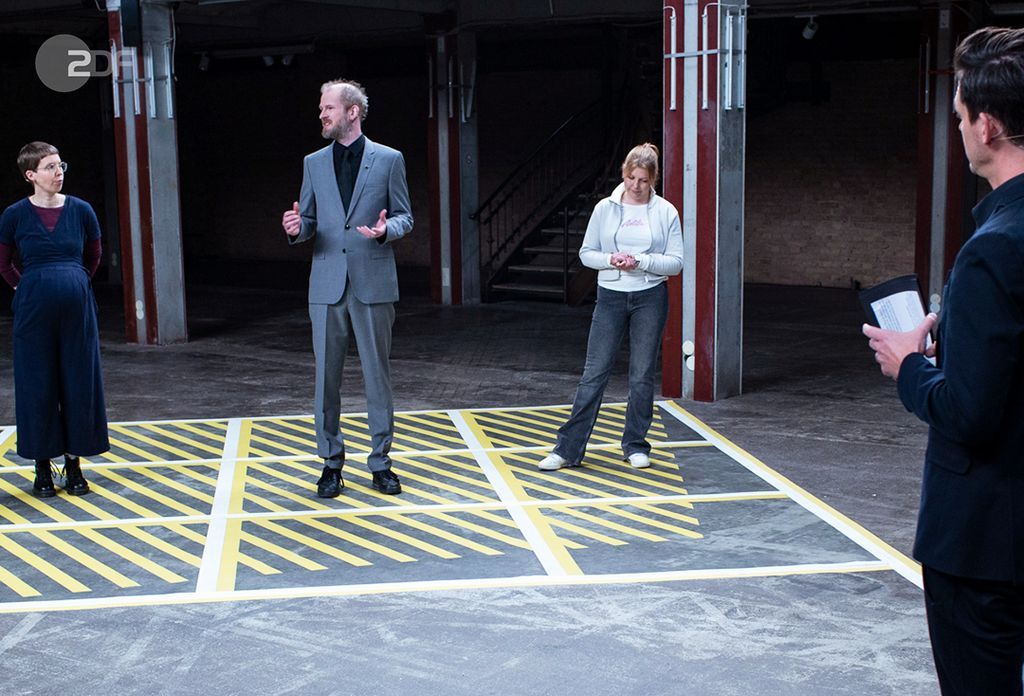Peace News writes about its role in creating the globally-recognised icon.
‘Without you (Hugh Brock), Michael Randel (sic) and Pat (Arrowsmith) there would have been no symbol.’
So wrote the artist and designer of the nuclear disarmament symbol, Gerald Holtom, in a letter dated 29 September 1973 to Hugh Brock, PN editor 1955–1964, and the chair of the Direct Action Committee Against Nuclear War (DAC) which organised the first Aldermaston March at Easter 1958.
Gerald was referring to a meeting at the committee’s office in Blackstock Road, Finsbury Park, North London, in early 1958 at which he showed the three of us his now famous nuclear disarmament symbol, and sketches of how he envisioned it would look on giant banners stretching the width of the street, plus numerous ‘lollipop’ banners.
We agreed there and then on behalf of the committee to adopt it – in my case not because I was immediately convinced it would be effective but because of Hugh’s enthusiasm, an older and seasoned campaigner.
However, not everyone was immediately convinced.
When our first leaflets appeared bearing the symbol, Harry Mister, who ran Housmans bookshop where I was working, took one look at it and said: ‘What on earth were you, Pat and Hugh thinking about when you adopted that symbol? It doesn’t mean a thing and it will never catch on!’ If the march had flopped he might well have been right. To his credit, for the rest of his life Harry was never to be seen without a badge bearing the symbol on his lapel.
Roots of the march
The Direct Action Committee Against Nuclear War (initially the Committee for Direct Action Against Nuclear War) had been installed in a small office in the PN/Housmans building, with Pat Arrowsmith as its organising secretary. An Aldermaston March Committee to take charge of the detailed planning comprised Hugh, Frank Allaun MP and Walter Wolfgang (both members of the Labour Hydrogen Bomb Campaign Committee), and myself. We met weekly in a room in the House of Commons booked for us by Frank.
The roots of the DAC go back to a small group set up in December 1951 initially calling itself ‘Operation Gandhi’ (subsequently renaming itself the Non-Violent Resistance Group) which was committed to using Gandhi’s method of nonviolent action in the campaign against war, and to building a nonviolent society.
Operation Gandhi itself arose out of a study group set up by the Peace Pledge Union in 1949, some of whose members by 1951 felt it was time to put the ideas they had been discussing into practice.
Hugh Brock, then deputy editor of Peace News, was the secretary of, and driving force behind, the group, whose first action in January 1952 was a sit-down outside the war office in Whitehall.
The group went on to organise a series of demonstrations in the years which followed, including two at Britain’s nuclear bomb factory at Aldermaston in 1952 and 1953; at the USAF base at Mildenhall in Suffolk where two young women, Connie Jones and Dorothy Morton, lay down in front of the entrance; at the microbiological research establishment at Porton Down; and at the atomic weapons research establishment at Harwell.
The more immediate antecedent of the Aldermaston March was the attempt by the Quaker Harold Steele to hire a boat in Japan and sail with other volunteers to Christmas Island in the Pacific to try to prevent the British government from carrying out its scheduled H-bomb test.
A temporary Emergency Committee for Direct Action was set up which included well-known personalities including Bertrand Russell, Alex Comfort, Laurence Housman and Spike Milligan.
The test went ahead before the intervention could take place but, on Harold’s return to Britain, Hugh called a meeting of volunteers and supporters to welcome him home and to explore ways of building on the interest and publicity that the project had engendered. It was at that meeting, and at the suggestion of Hugh Brock, that the decision was made to organise a four-day march the following Easter from London to Aldermaston.
The earlier demonstrations at Aldermaston in the 1950s had comprised hiring a coach to the site, marching round the base and holding an open-air meeting in the nearby village itself. A four-day march was something different and we hoped and expected that it would be on a larger scale. But we did not anticipate the scale of the response that in fact occurred.
Enquiries and offers of help came from every quarter. Churches, Quaker meeting houses, and individuals who lived along the route of the march all offered accommodation. Kenny Ball and his Jazzmen, Chris Barber, and other jazz musicians and skiffle groups volunteered to provide music. The London Co-operative Society undertook to provide sandwiches and hot drinks from a mobile canteen. Michael Howard agreed to organise and train marshals. The Partisan coffee house, set up by the Universities and Left Review in London’s Soho, became a centre for the distribution of publicity. Film makers co-operated to make a record of the march, and the eventual film was directed by Lindsay Anderson with Richard Burton speaking the commentary. Soon the Peace News phone was so busy that an additional line had to be installed.
Times were a-changing
A major reason for the success of the march in comparison to earlier anti-nuclear protests was the transformation in the political and cultural context in which it took place.
1956 had seen the Anglo-French-Israeli attack on Egypt, and, on the other side, the Soviet invasion of Hungary to suppress demands for reform and greater freedom. There was also a flowering of artistic and literary talent around that period as exemplified in this country by dramatists like John Arden, Margaretta D’Arcy, Robert Bolt, Arnold Wesker and Shelagh Delaney, poets such as Christopher Logue and Hugh MacDiarmid, and other writers and commentators such as Alex Comfort, John Berger and Edward Thompson. The vast majority of those involved in this cultural renaissance supported the anti-nuclear cause.
Awareness of the danger of nuclear war was also heightened by the Russell-Einstein declaration of 1955. This inspired the formation of the Pugwash conference in 1957 at which scientists from East and West, and from many different countries, drew attention to the dangers of human extinction in a nuclear war.
In this country, the National Council for the Abolition of Nuclear Weapon Tests set up early in 1957, and the public launch of the Campaign for Nuclear Disarmament (CND) on 17 February 1958, just weeks before Aldermaston, all facilitated the mobilisation for the march.
It is right to celebrate the emergence of the anti-nuclear and anti-war campaign of 60 years ago. It is a positive sign, too, that the UN general assembly last year voted for a ban on all nuclear weapons and that the Nobel Peace Prize was awarded to the International Campaign to Abolish Nuclear Weapons – of which CND is a member. But the fact remains that nuclear weapons are still with us, that the nuclear powers, far from disarming, are stepping up their nuclear arsenals to the accompaniment of infantile and dangerous posturing. The anniversary therefore is an occasion not for complacency but for investing new energy into achieving the goal of abolition and an imaginative re-thinking of campaigning methods to achieve it.
This article first appeared in the April-May issue of Peace News.
As well as being one of the organisers of the 1958 Aldermaston March, Michael Randle was chair of the Direct Action Committee Against Nuclear War (1958–61) and secretary of the Committee of 100 (1960–61).








